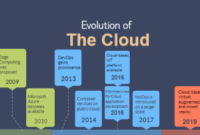Adapting to Technological Disruptions
Daftar Isi Artikel
Technological advancements continually reshape the financial landscape. Businesses must stay agile and embrace new technologies to remain competitive. Key areas to focus on include:
- Artificial Intelligence (AI) and Machine Learning: AI and machine learning are transforming financial analysis, risk management, and customer interactions. AI-driven tools can automate routine tasks, provide predictive insights, and enhance decision-making processes.
- Robotic Process Automation (RPA): RPA can streamline repetitive financial processes such as data entry, reconciliation, and compliance reporting. Implementing RPA improves efficiency and reduces the risk of human error.
- Fintech Innovations: Stay updated on emerging fintech solutions, such as digital wallets, peer-to-peer lending, and cryptocurrency. Evaluating these innovations can offer new opportunities for financial management and growth.
- Cybersecurity: As digital financial tools become more prevalent, ensuring robust cybersecurity measures is crucial. Implement strong security protocols to protect sensitive financial data from cyber threats and fraud.
Capitalizing on Market Trends
Understanding and leveraging market trends can create opportunities for business growth and financial success. Consider:
- Consumer Behavior: Analyze changes in consumer behavior and preferences to tailor products, services, and marketing strategies. Adapting to market demands can enhance customer satisfaction and drive revenue growth.
- Economic Indicators: Monitor economic indicators such as interest rates, inflation, and employment rates. These indicators can impact business decisions related to investment, pricing, and cost management.
- Industry Trends: Stay informed about trends and developments within your industry. Adapting to industry trends can position your business as a leader and open new avenues for innovation.
- Competitive Analysis: Conduct competitive analysis to understand your competitors’ strengths and weaknesses. Use this information to differentiate your offerings and capitalize on market opportunities.
Strategic Financial Partnerships
Forming strategic financial partnerships can provide valuable resources, expertise, and support. Key partnership strategies include:
- Financial Institutions: Build relationships with banks and financial institutions for access to credit, investment, and financial services. Strong relationships can facilitate favorable financing terms and support business growth.
- Advisory Firms: Partner with advisory firms for expert guidance on financial planning, risk management, and investment strategies. Professional advisors can provide valuable insights and recommendations.
- Investment Partners: Seek investment partners to support growth initiatives and expansion projects. Investment partners can offer capital, industry expertise, and strategic support.
- Business Networks: Join business networks and industry associations to connect with potential partners, customers, and collaborators. Networking can create opportunities for joint ventures, partnerships, and strategic alliances.
Long-Term Financial Sustainability
Developing a Sustainable Business Model
Creating a sustainable business model involves integrating financial, environmental, and social considerations into your business strategy. Key aspects include:
- Resource Efficiency: Implement practices that enhance resource efficiency and reduce waste. Energy-efficient operations and sustainable sourcing can lower costs and improve environmental impact.
- Revenue Diversification: Diversify revenue streams to reduce reliance on a single source of income. Explore new markets, products, or services to create a more resilient business model.
- Customer Engagement: Build strong relationships with customers through personalized experiences and high-quality service. Engaged customers are more likely to remain loyal and contribute to long-term financial stability.
- Innovation and Adaptation: Continuously innovate and adapt your business model to meet changing market demands and technological advancements. Staying ahead of industry trends can drive growth and ensure sustainability.
Enhancing Financial Resilience
Building financial resilience involves preparing for uncertainties and ensuring that your business can withstand economic and financial challenges. Strategies include:
- Stress Testing: Conduct stress tests to evaluate how different scenarios, such as economic downturns or market shocks, impact your financial health. Use the results to develop contingency plans and risk mitigation strategies.
- Diversified Investments: Spread investments across different asset classes, industries, and geographies to reduce risk and enhance financial stability. Diversification can protect against market volatility and economic fluctuations.
- Operational Efficiency: Continuously improve operational efficiency to optimize costs and enhance profitability. Streamlining processes and adopting best practices can strengthen financial resilience.
- Scenario Planning: Develop and regularly update scenario plans to prepare for various potential outcomes. Scenario planning helps anticipate challenges and identify opportunities for adaptation.
Measuring and Communicating Financial Success
Key Performance Indicators (KPIs)
Tracking and measuring financial success involves using Key Performance Indicators (KPIs) to assess progress towards financial goals. Important KPIs include:
- Revenue Growth Rate: Measures the rate at which revenue is increasing over time. Positive revenue growth indicates business expansion and market success.
- Profit Margins: Assesses profitability by calculating gross, operating, and net profit margins. Healthy profit margins reflect efficient cost management and strong financial performance.
- Return on Assets (ROA): Evaluates how effectively a business uses its assets to generate profit. A higher ROA indicates efficient asset utilization.
- Customer Acquisition Cost (CAC): Measures the cost of acquiring new customers. Comparing CAC with Customer Lifetime Value (CLV) helps assess the effectiveness of marketing and sales strategies.
Communicating Financial Performance
Effective communication of financial performance is crucial for transparency and stakeholder engagement. Consider:
- Regular Financial Reports: Provide regular financial reports to stakeholders, including investors, employees, and partners. Reports should include key financial metrics, performance summaries, and strategic insights.
- Annual Reports: Prepare comprehensive annual reports that highlight financial achievements, challenges, and future plans. Annual reports offer a detailed overview of financial health and strategic direction.
- Stakeholder Meetings: Host meetings with stakeholders to discuss financial performance, address concerns, and share updates. Open dialogue fosters trust and ensures alignment with stakeholder expectations.
- Media and Public Relations: Utilize media and public relations strategies to communicate financial success and milestones. Positive media coverage can enhance brand reputation and attract potential investors and customers.
Conclusion
Navigating the complexities of business finances requires a strategic approach, adaptability, and continuous learning. By embracing technological advancements, capitalizing on market trends, forming strategic partnerships, and building financial resilience, businesses can achieve long-term success and sustainability.
A comprehensive financial management strategy that aligns with business goals, incorporates sustainable practices, and leverages innovative solutions will position businesses for growth and prosperity. Effective measurement and communication of financial performance further support transparency and stakeholder engagement.
As businesses evolve and face new challenges, staying informed, agile, and proactive will be key to thriving in a dynamic and competitive environment. Mastering financial management is not just about managing numbers—it’s about strategically navigating the future and ensuring enduring success and stability.




